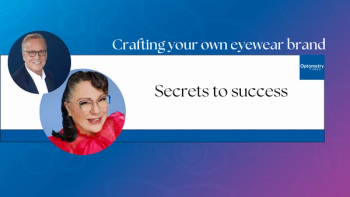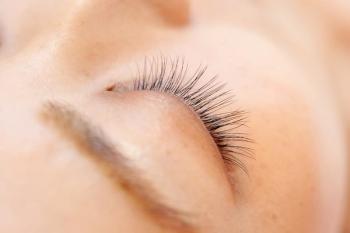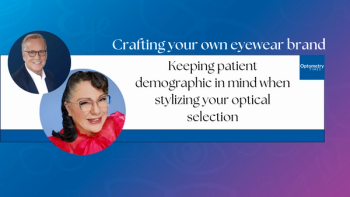
Top 10 patient horror stories
Halloween is here, so we asked eyecare professionals on ODWire, ODs on Facebook, and our own editorial advisory board to share their own patient horror stories.
Halloween is here, so we asked eyecare professionals on
As we’re sure you already know, it’s pretty crazy what some people will do to their eyes. Some of the stories are funny; some are scary; and some are more of the LOL-OMG-WTF variety.
So gather round the exam room chair, girls and boys, and get ready for patient horror stories that will chill you to the bone.
Optometry Times Editorial Advisory Board member David Kading, OD, FAAO, in Kirkland, WA
This patient got a particle of metal in his eye and decided to rub it until “blood and water flowed.” He ended up with multiple pupils, a complete torn lens, and many visual problems. We corrected his vision with a custom contact lens with decentered optics, and he now has 20/30 vision.
Related:
From ODs on Facebook: Weiling Chen, LDO
A 45-year-old Caucasian female came for an eye emergency-she’d worn the same pair color contact lenses for two and a half years. She never took out a lens until it ripped, then she removed her contact lenses, and her cornea started to bleed. She had four-inch long dirty brown nails on her fingers, and she covered her painful eye in a dirty brown stained bath towel. The whole eyeball was blood red, and she was sent to the ER and then referred to an MD. She was in the hospital for 28 days. The infection was so bad that a peripherally inserted central catheter (PICC) line was used for her treatment.
Optometry Times blogger Michael Brown, OD, FAAO
In late October 1994, I was precepting a fourth-year optometry student at Fox Army Hospital at Redstone Arsenal, AL. Toward twilight, when shadows grow longer and strange things start to happen, an elderly patient was referred from the ER to the eye clinic with a sudden onset of redness and swelling, along with pain on eye movement.
I had already scoped out the patient in the chair, but I decided to have a little fun and let the student have a crack at him. She settled the patient into the slit lamp and began to gingerly part his swollen, tender lids. A second later, his entire bulbar conjunctiva popped out like an air bag in a head-on collision and spilled out onto his cheek!
The student gasped, look on in horrid fascination through the oculars, and exclaimed, "Oh. My. God!"
Considering the amount of chemosis, I was surprised when the orbital CT showed only preseptal involvement. A shot of ceftriaxone in the rump cleared him up in a couple of days.
But we playfully created the “No ‘Oh My God!’” rule during clinic hours and named it after the student. It endures to this day.
From ODs on Facebook: Amanda Zeller Manley, OD, FCOVD
I have a good one from my first year in practice. A guy comes in, doesn't speak any English but brings a friend to translate (whose English is only so-so). The patient complains of blurred vision, horrible red eyes, and eye pain.
It turned out he had been wearing his flea market colored contact lenses for a YEAR year without removing them. I was so flabbergasted that I found another translator to confirm what I’d just heard. He refracted something like +3.00 D with 4.00 D of cylinder, to 20/50 with hazy corneas.
I was really worried that he would have permanent damage, but I followed him every few days, then weekly for a month, and he was completely fine-plano with 20/20 visual acuity. He didn’t even get neovascularization. I really gave him a lecture about how lucky he was. I hope he learned his lesson.
From ODWire: Matt Judd, OD, Hendersonville, TN
So, Mom brings a 12-year-old kid in a couple years ago, and she said his right eye had been bothering him. He said he was playing in the woods, and his eye somehow became scratched. I take a peek, and there is a BB in his anterior chamber with a lovely hyphema.
As it turns out, his uncle-who may have had a few too many-decided to do some target practice...using an apple...on the kid’s head.
Mom’s reaction was not good.
From ODWire: Andrew Ambrose, OD, in Williamsburg, VA
A patient had LASIK, and she was told at her follow-up visit that she had a hair in her eye. She was cool with it, so this isn’t really that horrifying, and she’s still cool with it nine years later. Most people are horrified over a hair in their food, and this patient has one in her eye!
Optometry Times Editorial Advisory Board member Mile Brujic, OD, FAAO, Bowling Green, OH
This one happened about two years after I graduated, and I still laugh when I think about it.
I had examined an 85-year-old husband and wife. They both updated their glasses that day after the exam. About one month after the exam, the husband was on my schedule because of problems seeing out of his new glasses. That day I saw him, and he was pretty irate! His wife was sitting in the exam room with him, and she was always remarkably pleasant. She sat in the exam room with a large smile on her face.
“I can't see out of my new glasses!” he said “Do you know how much I spent for these! My vision is actually better without them!”
I checked his visual acuities, and he was right-he wasn't seeing well out of the glasses. But when I looked at him, I realized there was something very feminine about the frames he was wearing. What was also interesting was that his wife's glasses looked remarkably masculine. I think that you can figure out the rest of the story-they were each wearing each other’s glasses.
I switched the glasses and put his on his face. He looked around and with an angry tone said, “Well, why am I wearing my wife's glasses?"
I looked at him and smiled and said, “Yeah, why are you wearing your wife’s glasses?” He smiled. Surprisingly, his wife never said anything about her glasses.
Optometry Times Editorial Advisory Board member Justin Bazan, OD, Brooklyn, NY
I had a guy walk in, sit down, and have a heart attack. I am not sure what happened to him. Luckily, this was in midtown Manhattan, and after I placed the call to 911, EMTs were on the scene in just a few minutes. He probably died because who wouldn't come back to say, “Hey, thanks for calling 911-you saved my life"
Editor’s note: Wow, Dr. Bazan. That’s dark!
From ODWire: Laurence Craig Thomas, OD, in Dallas
A 23-year-old black man came in for an eye examination. He was accompanied by his mother, who was a patient of mine. He was monocular, having already lost one eye to a diabetic retinopathy-induced retinal detachment several years earlier. He does not wear eyeglasses and has no insurance.
His visual acuity was hand motion at three feet. He could not see my hand when I tried to shake his hand. He has no significant refractive error.
He was blind on that day’s visit. I got on the phone with the retina surgeon and arranged a cash price that the mom could deal with, and the patient received several laser treatments and significantly lowered fees
When I asked him if his vision didn't get worse before it got that bad, he said it did, but he didn’t have a job or any money, and he didn't want to ask his mom for help.
Go figure. I guess we know who’s driving the train!
Jennifer Ambler, OD of Brattleboro, VT
I had a rather eccentric 70-something woman, a long-time patient, come in for a “routine” exam, commenting that she couldn’t see out of one eye. We assumed blur, cataract, whatever. Nope! In pretesting, she had no light perception. On further questioning, I learned that the eye had suddenly gone totally blind several months before, but she waited to see if it would get better on its own. It turned out to be one of a whole series of small strokes she had been having and continued to have (which also served to make her even more eccentric).
Newsletter
Want more insights like this? Subscribe to Optometry Times and get clinical pearls and practice tips delivered straight to your inbox.


















































.png)


